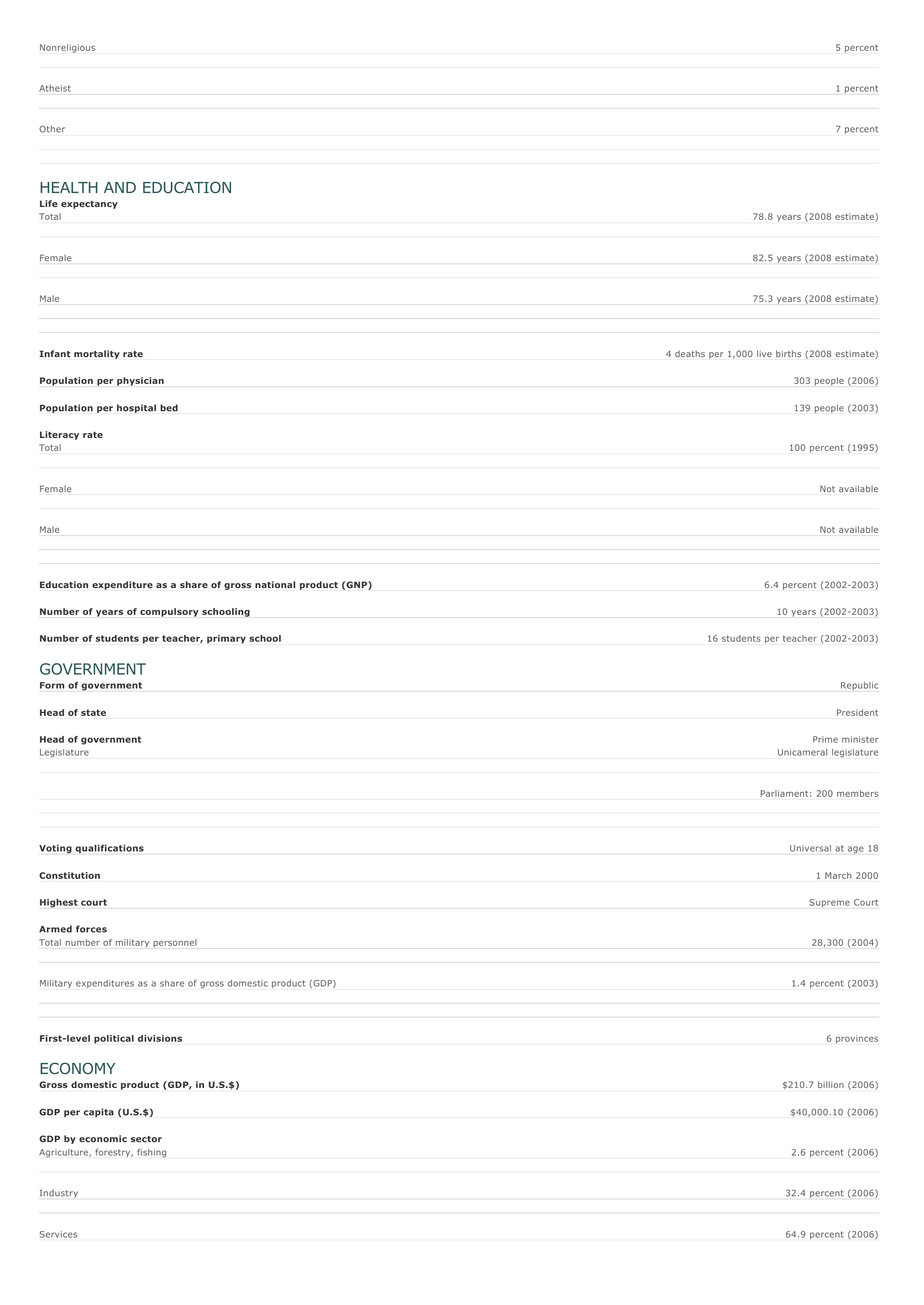Finland Facts and Figures. BASIC FACTS Official name Capital Area Republic of Finland Helsinki 338,145 sq km 130,559 sq mi PEOPLE Population 5,244,749 (2008 estimate) Population growth Population growth rate 0.11 percent (2008 estimate) Projected population in 2025 5,251,272 (2025 estimate) Projected population in 2050 4,819,615 (2050 estimate) Population density 17 persons per sq km (2008 estimate) 45 persons per sq mi (2008 estimate) Urban/rural distribution Share urban 61 percent (2005 estimate) Share rural 39 percent (2005 estimate) Largest cities, with population Helsinki 564,521 (2006 estimate) Espoo 227,472 (2005 estimate) Tampere 202,932 (2005 estimate) T urku 174,824 (2005 estimate) Oulu 127,226 (2005 estimate) Ethnic groups Finn 93 percent S wede 6 percent Saami, Russian 1 percent Languages Finnish (official) 92.5 percent Swedish (official) 5.7 percent Small Saami- and Russian-speaking minorities 0.5 percent Others 1.3 percent Religious affiliations Protestant (Evangelical Lutheran) Finnish Orthodox 86 percent 1 percent Nonreligious 5 percent Atheist 1 percent O ther 7 percent HEALTH AND EDUCATION Life expectancy Total 78.8 years (2008 estimate) Female 82.5 years (2008 estimate) Male 75.3 years (2008 estimate) Infant mortality rate 4 deaths per 1,000 live births (2008 estimate) Population per physician 303 people (2006) Population per hospital bed 139 people (2003) Literacy rate Total 100 percent (1995) Female Not available Male Not available Education expenditure as a share of gross national product (GNP) Number of years of compulsory schooling Number of students per teacher, primary school 6.4 percent (2002-2003) 10 years (2002-2003) 16 students per teacher (2002-2003) GOVERNMENT Form of government Head of state Head of government Legislature Republic President Prime minister Unicameral legislature Parliament: 200 members Voting qualifications Constitution Highest court Universal at age 18 1 March 2000 Supreme Court Armed forces Total number of military personnel Military expenditures as a share of gross domestic product (GDP) First-level political divisions 28,300 (2004) 1.4 percent (2003) 6 provinces ECONOMY Gross domestic product (GDP, in U.S.$) $210.7 billion (2006) GDP per capita (U.S.$) $40,000.10 (2006) GDP by economic sector Agriculture, forestry, fishing 2.6 percent (2006) I ndustry 32.4 percent (2006) Services 64.9 percent (2006) Employment Number of workers Workforce share of economic sector Agriculture, forestry, fishing 2,660,019 (2006) 5 percent (2005) I ndustry 26 percent (2005) Services 69 percent (2005) Unemployment rate 8.9 percent (2004) National budget (U.S.$) Total revenue $80,587 million (2006) Total expenditure $74,189 million (2006) Monetary unit* 1 euro (EUR), consisting of 100 cents *The Finnish markka (FMk) became linked to the EU single currency, or euro (EUR), on 1 January 1999 at a fixed rate of 5.94573 to 1 euro (EUR). Euro coins and bills replaced the Finnish markka as the national currency on January 1, 2002. Major trade partners for exports Germany, United States, United Kingdom, Sweden, and Russia Major trade partners for imports Germany, Sweden, Russia, United Kingdom, and France ENERGY, COMMUNICATIONS, AND TRANSPORTATION Electricity production Electricity from thermal sources 48.43 percent (2003 estimate) Electricity from hydroelectric sources 11.73 percent (2003 estimate) Electricity from nuclear sources 27.13 percent (2003 estimate) Electricity from geothermal, solar, and wind sources 12.71 percent (2003 estimate) Number of radios per 1,000 people 1,626 (2000 estimate) Number of telephones per 1,000 people 404 (2005) Number of televisions per 1,000 people 693 (2000 estimate) Number of Internet hosts per 10,000 people 2,437 (2003) Daily newspaper circulation per 1,000 people 445 (2000) Number of motor vehicles per 1,000 people 515 (2004) Paved road as a share of total roads 65 percent (2004) SOURCES Basic Facts and People sections Area data are from the statistical bureaus of individual countries. Population, population growth rate, and population projections are from the United States Census Bureau, International Programs Center, International Data Base (IDB) (www.census.gov). Urban and rural population data are from the Food and Agriculture Organization (FAO) of the United Nations (UN), FAOSTAT database (www.fao.org). Largest cities population data and political divisions data are from the statistical bureaus of individual countries. Ethnic divisions and religion data are largely from the latest Central Intelligence Agency (CIA) World Factbook and from various country censuses and reports. Language data are largely from the Ethnologue, Languages of the World, Summer Institute of Linguistics International (www.sil.org). Health and Education section Life expectancy and infant mortality data are from the United States Census Bureau, International Programs Center, International database (IDB) (www.census.gov). Population per physician and population per hospital bed data are from the World Health Organization (WHO) (www.who.int). Education data are from the United Nations Educational, Scientific and Cultural Organization (UNESCO) database (www.unesco.org). Government section Government, independence, legislature, constitution, highest court, and voting qualifications data are largely from various government Web sites, the latest Europa World Yearbook, and the latest Central Intelligence Agency (CIA) World Factbook. The armed forces data is from Military Balance. Economy section Gross domestic product (GDP), GDP per capita, GDP by economic sectors, employment, and national budget data are from the World Bank database (www.worldbank.org). Monetary unit, agriculture, mining, manufacturing, exports, imports, and major trade partner information is from the statistical bureaus of individual countries, latest Europa World Yearbook, and various United Nations and International Monetary Fund (IMF) publications. Energy, Communication, and Transportation section Electricity information is from the Energy Information Administration (EIA) database (www.eia.doe.gov). Radio, telephone, television, and newspaper information is from the United Nations Educational, Scientific and Cultural Organization (UNESCO) database (www.unesco.org). Internet hosts, motor vehicles, and road data are from the World Bank database (www.worldbank.org). Note Figures may not total 100 percent due to rounding. Microsoft ® Encarta ® 2009. © 1993-2008 Microsoft Corporation. All rights reserved.












